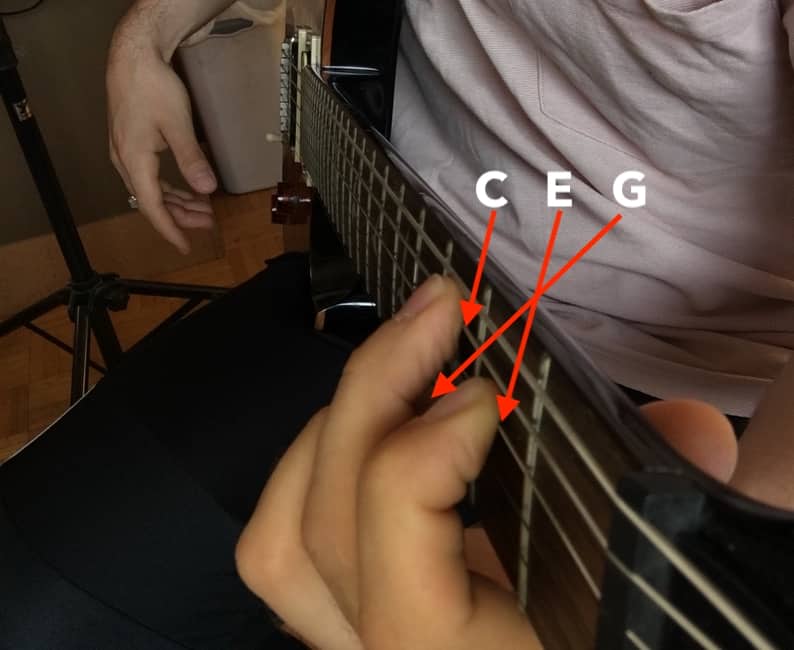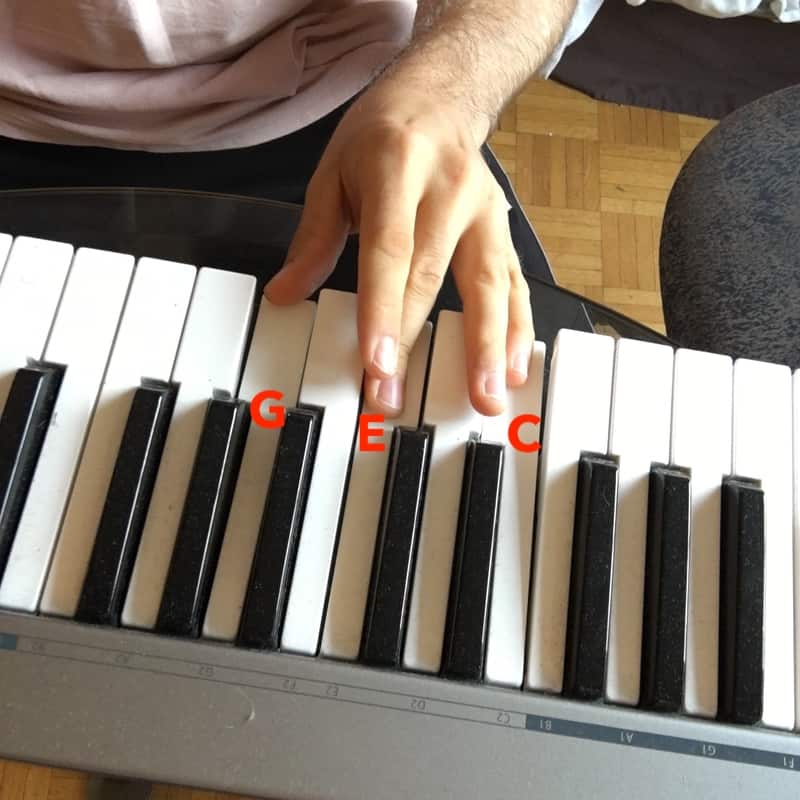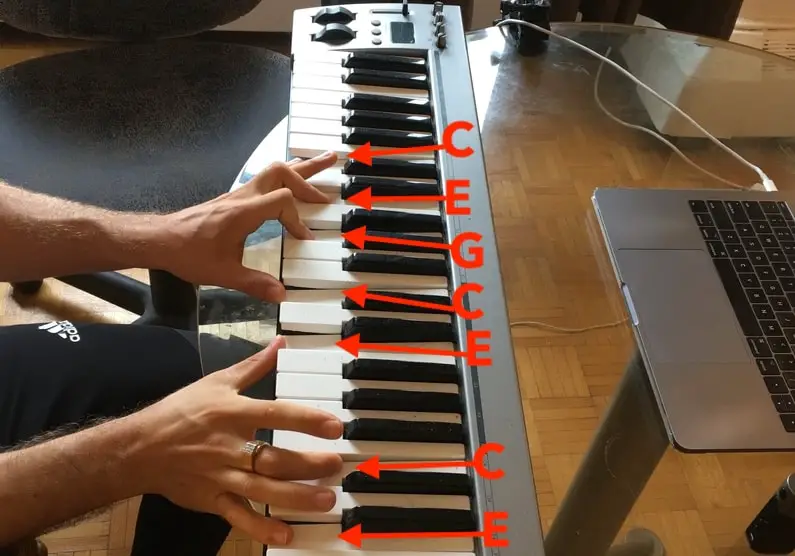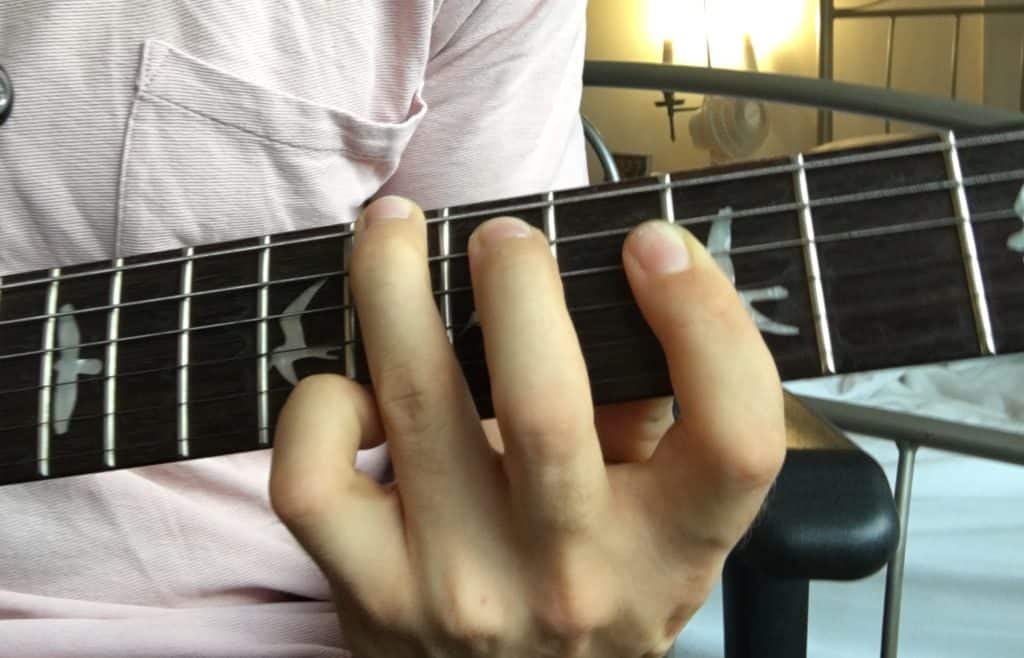Yes, guitar chords can be used for piano, because the musical structure of chords is the same regardless of the instrument. The only difference is the way in which the notes of the chord are mapped out on the individual instrument.
For instance, a C Major chord is still a C Major chord (C-E-G), regardless of the instrument it’s played on, the only difference is how it’s played, rather than the actual chord itself.
One of the great things about the piano is the way the notes, scales, intervallic relationships, and key signatures are spread out evenly across the keyboard, in a way that’s easy to see and easy to understand.
For that reason, many people argue that the piano – or the keyboard – is one of the greatest instruments to use for composition’s sake, and I agree. I find that composing songs on a keyboard/piano is actually far easier than writing a song on a guitar.
The reason for this is what I mentioned above, the fact that the notes, scales, key signatures (more on this in my guide), and intervallic relationships are so easy to see when they’re spread out in front of you on an easy-to-see interface right in front of you.
This is one of the reasons I state why learning the piano is generally quite a bit easier than guitar.
It’s not like a guitar, which tends to be something of a labyrinth. It takes a long time to actually memorize every note/fret on the guitar, because of the way that the strings are organized in comparison to each other.
For example, the strings are typically a perfect fourth apart from each other, with the exception of the G to the B string, which is a Major Third.
The piano, on the other hand, is all the same across the entire keyboard, so all you have to do is memorize all the notes from Middle C to the next C, including the black keys, and voila! You’ve essentially memorized the keys all over the keyboard because it’s just repeated all across the keyboard (btw, here’s my guide on memorizing key signatures)
Consequently, one of the primary differences between the piano and a guitar is the fact that the piano doesn’t have the same note on it more than once.
For instance, the 7th fret of the A string on the guitar, is the same E-note as the 2nd fret on the D-string, the only difference is that it’s on a thicker/lighter string, so it sounds a little bit different, but the note itself, including the pitch, is fundamentally the same.
While this has certain advantages from a compositional perspective, it also has its drawbacks.
On a piano, however, the same note isn’t played twice at the same pitch. The lowest C note on the piano can’t be played on any other part of the piano at the same pitch.
The same note can be played, in fact, a bunch of different times across the piano’s keys, but those C-notes are different in pitch.
As long as you understand the notes of the chord, you can play that chord on any instrument, it’s just that the position of the notes is going to be mapped out differently depending on the instrument.
For instance, a C-chord can look like this on the guitar:

Whereas the C-chord looks like this on the piano:

This is one of the great aspects of understanding music theory and standard notation because once you know how to understand the theories and the common language that’s used for each instrument, you’ve essentially mastered the hard part.
Once you know how to read music, and are good at it, it’s just a matter of learning how these relationships play out on the instrument you’re learning. Like I said earlier, I learned a good amount from PianoForAll.
For this reason, the piano/keyboard is one of the most commonly suggested instruments for people to learn when they’re getting into music.
Children all over the world, especially in places like China, and formerly in Europe and North America, have their children learn the piano first because once you understand music theory and standard notation on the piano, you can translate those lessons to other instruments quite easily.
Furthermore, one of the amazing things about the piano is the fact that a person has 10 fingers at their disposal, and if you’ve learned how to make the best out of them, and can stretch them far apart from each other, extremely beautiful and interesting chord voicings can be used.
For instance, a C-chord that looks like what I showed in the image above, can be played on a piano using entirely different voicings that make it sound far more interesting and beautiful.
Of course, there are different chord voicings on a guitar as well, some of which I’ve explored in my guitar chords guide, but ultimately, the piano serves this purpose a lot more because you have ten fingers, so you can stuff a lot more notes in there that make the chord sound so much better.
For instance, you can play a C-chord on the piano that looks like this:

You can see how more sophisticated this chord voicing is in comparison to the C-chord that I listed near the beginning of the article.
However, it’s important to note there are a number of ways to play a C-chord on the guitar as well. For example, check out the image below to see what I’m talking about.

When learning chords on the guitar, assuming you don’t have any prior knowledge of music theory and the structure of harmony, the best way to go about learning how to play chords is to start out using simple shapes.
The most common shapes that people learn right away are the chords of the C Major scale: C Major, D Minor, E Minor, F Major, G Major, A minor, and B half-diminished, with the B-half-diminished chord, usually being left out for beginners.
With that said, and as I insinuated earlier in the article, the guitar is limited in terms of how many voicings there can be of a chord, whereas, on the piano, there are a lot more options available.
Furthermore, when playing a chord voicing on the guitar, you might have to change particular notes by an octave, which will fundamentally change the way the chord actually sounds.
With all that considered, there are some chords on the piano that are equally as easy and movable to play on the guitar as they are on the piano/keyboard.
For instance, the easiest chords to play on the piano are major and minor triads in the closed position. In this case, these chords are also easy to play on the guitar. You could also just choose to play without them if you really wanted (my article on this).
Other Articles You May Be Interested In
YouTube Video Tutorial
Conclusion
In conclusion, learning how to play chords on the piano is fundamentally the same on the piano as it is on the guitar, although, due to the structure of the instrument, there are some key differences.
For example, it makes sense to play piano chords by just simply adding in the notes on a piece-by-piece basis, because it’s easy to map out on the keyboard, whereas, on the guitar, guitarists usually think of chords as shapes.
The drawback to this, however, is that chords that are movable all over the neck tend to sound the same just at a different pitch.
I feel that for pianists, a great way to learn how to play more sophisticated chords on the piano is by simply learning how to play the major, minor, diminished, and augmented triads while adding more notes to it to create more sophisticated voicings of the same chord.
It’s entirely possible that a guitarist can learn chords on the guitar using the same methodology, but from what I’ve seen in the real world, most guitar players learn chords through common shapes.

 Written By :
Written By :